Scotland - Day 7: The South of Islay
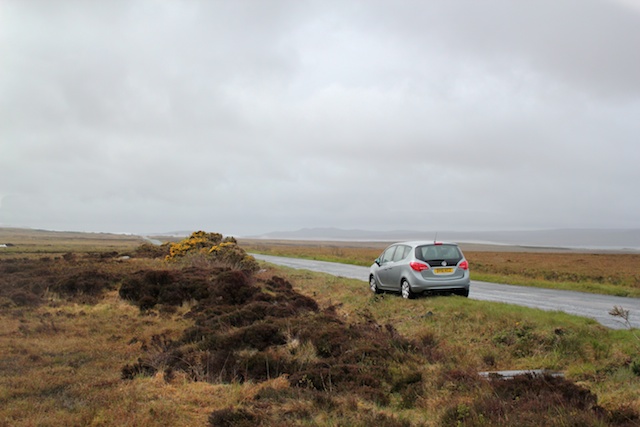
We boarded the ferry in Kennacraig at 6:45 AM, still groggy-eyed and without food in our stomachs. After a proper Scottish breakfast on the boat and a two hour ride across the straight, we landed in Port Askaig and tore off in an attempt to make our 9:15 Lagavulin appointment on time. We were scheduled to meet with local legend Iain McArthur first thing and he was to take us on a peat cutting adventure. After our infamous altercation at the distillery last March, we were eager to start off on the right foot and get a fresh start at Islay's most popular destination. No sooner had we pulled into the car park and checked in at the front desk, when Iain came tearing out of the back, shovel and digger in hand. He jumped right into the backseat of our little Vauxhall and directed us out into the Islay countryside. With over 40 years of experience at both Port Ellen and Lagavulin, Iain is a firecracker of Islay personality. I think I had more fun in those ten minutes driving than on any other part of the trip so far. Suddenly, he ordered us to pull over, turn on the hazard lights, and sally forth into the wet, muddy landscape.
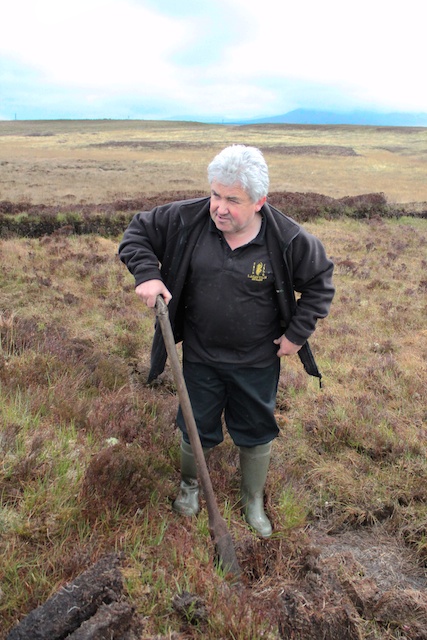
After giving us a quick lecture on the different types of peat, Iain had us digging out blocks like professionals. You can't use the earth without the roots because it won't burn right and it's important to take the high peat in order to keep a proper kiln fire smoldering. We extracted a few more chunks before the wet and windy weather forced us back to the car. Iain is a straight-shooter and he won't dodge any questions, which really endeared me to him. He's an old time good guy - humble, respectful, and always positive. He admitted that Lagavulin does in fact use caramel coloring to darken the 16. I had always thought it came from sherry-aging, but apparently Lagavulin doesn't see any fresh or first-refill sherry casks (they specify American or European oak). Shocking!
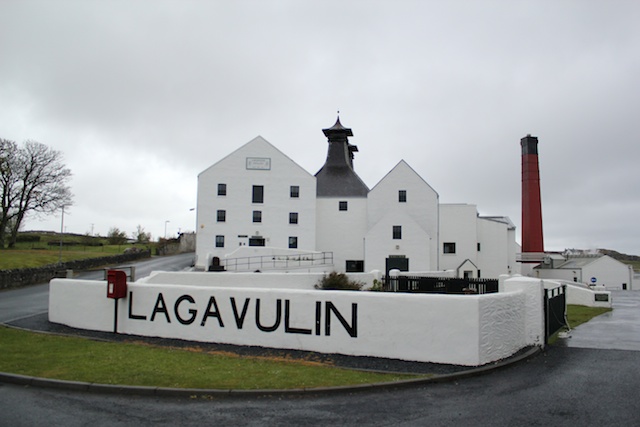
Back at the distillery, we left Iain to his tour groups and set off with operations director Georgie Crawford for an insider tour. I can safely say that I learned more on this visit with Georgie than on any other distillery appointment previously. She is a wealth of information, but she's of an entirely different mindset than I am. She thinks about the distillery with great personal pride, as she is in charge of its day-to-day duties. However, rather than boast about the quality of the whisky at Lagavulin or her role in its legacy of greatness, Georgie seemed more happy about the amount of single malt it was able to produce, how she was able to increase that efficiency, and how the distillery was able to function smoothly with as minimal a staff as possible. These were business achievements, accomplishments that have helped boost revenue, rather than the passions of a true whisky lover and at first I wasn't quite sure how I felt about them.
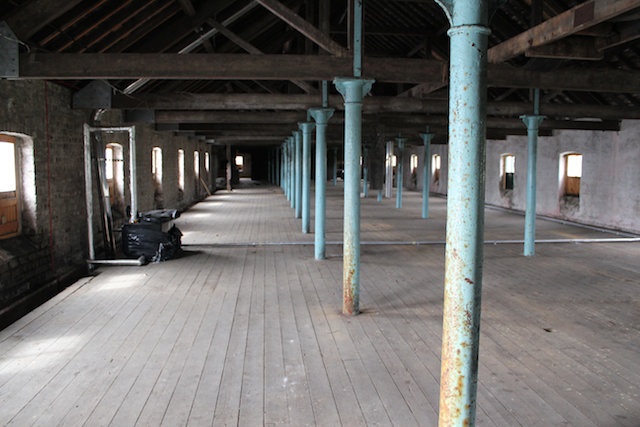
Our first trip was to the old malting floors. Lagavulin hasn't malted any of its own barley since the early 70's, now sourcing its grain from Port Ellen just down the road. Even though we couldn't watch the malting take place, Georgie explained the process with clarity that I had never before received. The toughest part of making a peated whisky is controlling the level of phenol in each kernel. Apparently, you could use the exact same amount of barley every time and smoke it with the exact same amount of peat, but you wouldn't end up with a consistent phenol level. The smoke actually clings to the outside of the husk and it can be knocked off with movement. When the barley is transported from Port Ellen to Lagavulin in a truck, the phenol ends up on the bottom of the container, much like the salt in a bucket of popcorn. Therefore, when you think you've got a ppm of 36, you may be down to about 20 by the time it gets to Lagavulin. For that reason, they no longer peat the barley to what their end goal is. They peat everything to 70 ppm and then just mix it with unpeated barley to cut the percentage down. What really fascinated me was her statement that most whisky can never really be unpeated. She said that phenols get everywhere, especially in distilleries that make peated whisky. The Caol Ila "Unpeated" for example has got to have some peat in it because phenol is like dust on the floor or yeast in the air. It's part of the terroir.
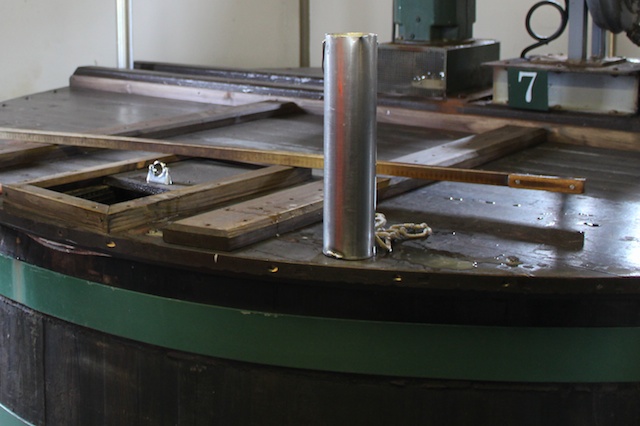
Never have I tasted fermented wort from a washback this delicious or this much like the final product. The beer at Lagavulin is a smoky brew that really tastes great on its own. Georgie credits this quality to the introduction of liquid or cream yeast - sort of like a starter for malt whisky. Like most bread bakers, Lagavulin uses a starter culture to ferment their wash now rather than dried yeast in a bag. Beginning with live, productive yeast allows for a more efficient ferment and a consistent flavor, making the job easier for everyone as well. It's allowed Lagavulin to increase the size of their wash, helping to produce an extra week's worth of spirit by the end of the year.

Georgie was also quite proud of the cleanliness of the fermentation process because it would eliminate any wild yeast or bacteria that might be living inside the distillery. I thought that was actually quite a pity because sometimes these local organisms can provide a distinct character to spirit, making it special and unique. However, it definitely wouldn't keep the flavor the same. When we got to the still room, there was only one person, Kevin, running the production. In fact, Georgie was happy to announce that he was actually single-handedly running the entire distillery at the moment. The process at Lagavulin has become so efficient that it's possible for one skilled person to do it alone. While we were watching Kevin at work, Georgie gave us a fantastic description of what makes Lagavulin's stills so special. The lyne arms at the top of the stills slope downward, which does not allow the heavier solutions to fall back to the bottom for redistillation. This would result in a heavier, oily malt were it not for the copper condensers that allow the spirit more contact with the metal to tame that texture. The quicker the distillation, the more spicy and heavy the spirit will be, but you can counteract that profile a bit by giving it more contact with copper. A slow distillation will also do the same, but like Oban taught us, it takes a very long time.
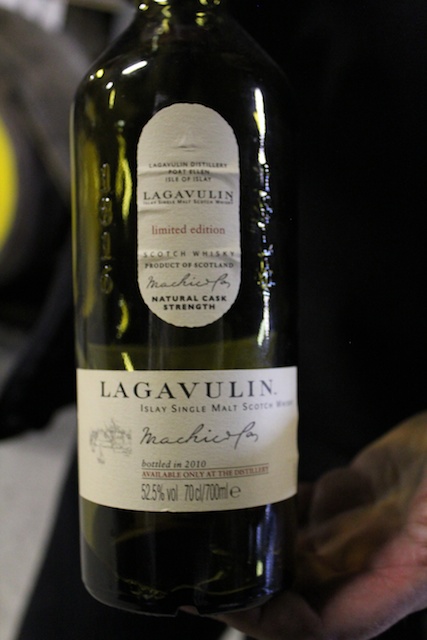
We met up with Iain again later for some tasting in the warehouse. A few casks were opened (a 1966 among them) and we were able to sample some of the older Islay festival releases. They were all very impressive and the alcohol allowed us all to mellow out a bit and chit-chat. Georgie rejoined us there and we had a great conversation that really got my mind thinking. Lagavulin is a Diageo distillery. It's a small production compared to some of the other company outposts and it is finding its recent popularity quite difficult to handle. They were forced to increase production in 1997 from six months a year to fifty weeks a year to keep up with demand - basically non-stop now. In order to keep things rolling smoothly, Georgie and others have been forced to find the most efficient way to do things. Despite the increased output, they're still running short on the 16 year until 2013 when the 1997 barrels from the increase will finally be old enough to bottle. Georgie's mindset is that she needs to keep moving forward, meeting the company goals, while keeping the whisky consistent. I can't really blame her. She's got a job to do and she's doing it exceptionally well. We've done the same thing at K&L, taking out the handles of Ballentines, ditching the liters of Smirnoff, and keeping our selection streamlined. While Lagavulin may have taken away some of the tradition, we've done the exact same - sacking the legacy of old time Scotch in favor of the modern gravitation toward single malt. I can't help but feeling it's somewhat like the smartphone invasion. It's great to have email at my fingertips and my wife only a dial away. My life is more streamlined and easier to manage, but what are the consequences? People talking when they drive, when they eat, at the register, etc. Anyway, I could go off here forever, so let's drop this for now. I will say that if you need a tutorial on how to run a distillery in the modern age, Georgie is your gal. Again, I learned more from her in an hour than I have on most other tours combined.
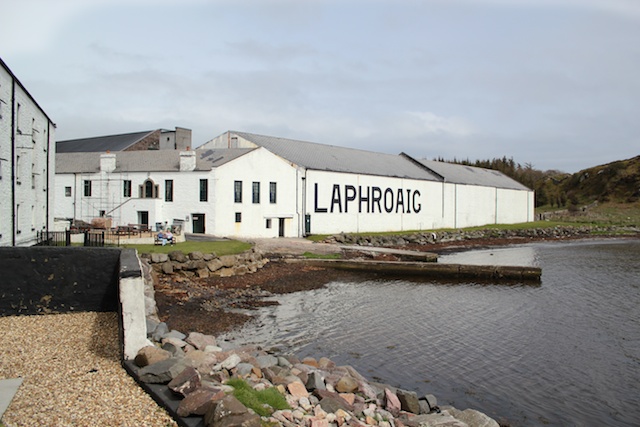
We did pop in for a quick lunch at Ardbeg, saying hello to our friend Mickey Heads. We had a great visit and discussed some new projects in the works, but soon we had to shoot over to Laphroaig for our appointment with distillery manager John Campbell.
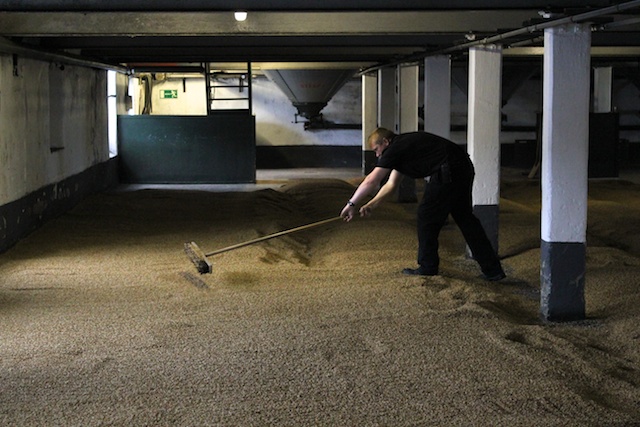
I was completely wrong in my previous post about floor malting. Springbank and Bowmore are not the only ones. Laphroaig uses in-house malting for 15% of its production, and apparently Balvenie and Highland Park do some as well. It was great to see the old traditional methods still being used. John said that he wasn't willing to go down in history as the man who changed Laphroaig, which gave us all quite a chuckle.
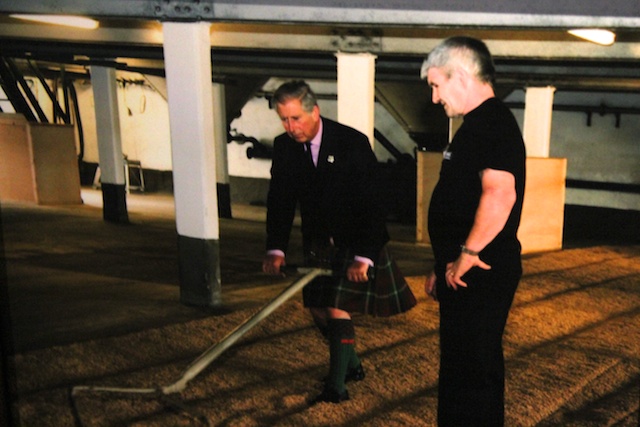
You know who else loves Laphroaig and its old, traditional malting floors? The Prince! He told them, "Don't ever change from the traditional methods." They haven't!
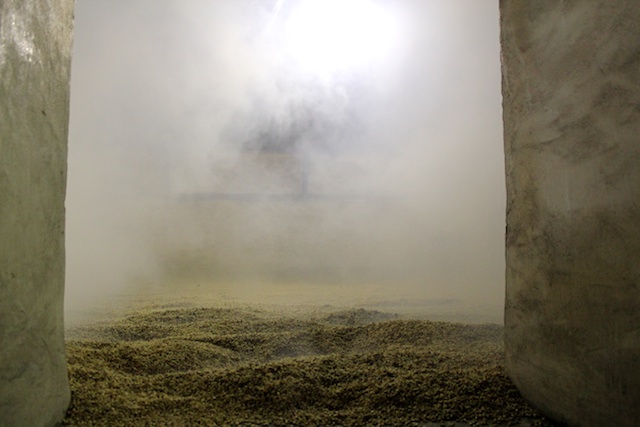
The great part about a distillery that does it's own malting is the peat kiln! You can't see peating in action unless there's some malting going on. An interesting fact - Laphroaig was actually available in the U.S during Prohibition because then-owner Ian Hunter convinced the government it was medicinal. The smoky, herbal, briny flavor had to be good for you, or why else would it taste like that? If you were an Islay lover in 1920's America, you were in luck!
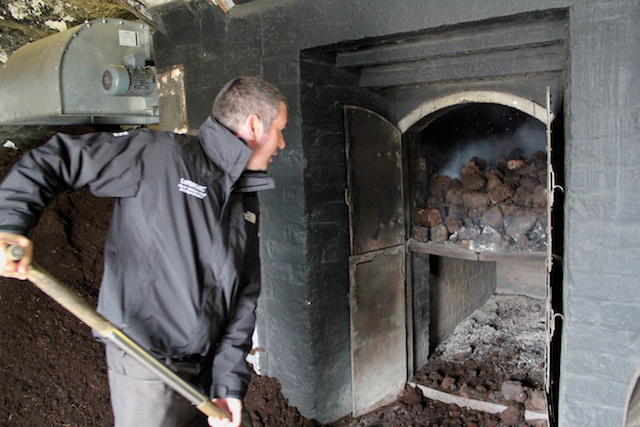
After watching the barley soak up the smoke, we headed down to the kiln itself to shovel some peat of our own. All three of us took turns stoking a new fire for the boys upstairs. The door behind John opens out to the sea and the salty air comes whipping in wildly, sending the embers into a frenzy and filling the building with the maritime aromas.
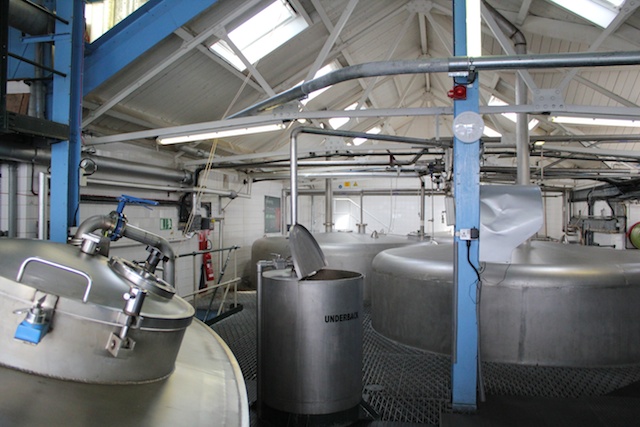
In the 1980's, Laphroaig was purchased by Whithead Brewery who believed that stainless steel was the best way to make beer, as well as whisky. They remodeled the mashtun and washbacks, installing all metal containers to keep things clean and sanitary.
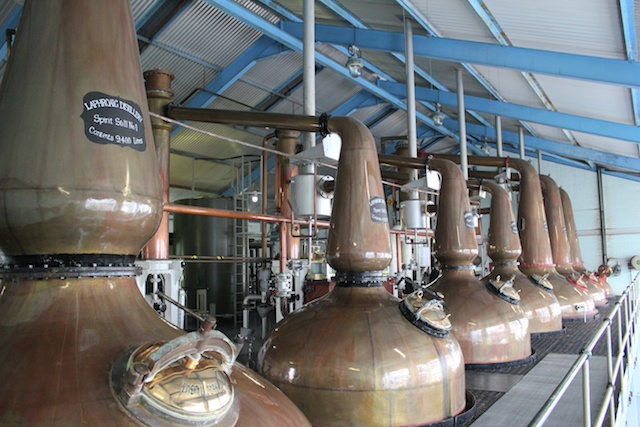
Unlike Lagavulin, the lyne arms at Laphroaig slant upwards, allowing the heavier alcohols to fall back down into the pot for redistillation. The smaller stills create a fruitier spirit due to the reflux.

The really interesting fact about Laphroaig is the barreling. They do everything in first-fill Bourbon barrels. The quarter-casks are used for the Quarter Cask release, but those whiskies still begin in ex-Bourbon cask first. Because of this, there's no real master blender at Laphroaig - it's just a formula really. They use x number of ten year old barrels and then dump them into a container, allow the whiskies to marry, and then bottle up the result. What use is a blender when it's all the same juice? All the barrels are filled at 63.5% because it's apparently scientific fact that new make soaks up the most amount of wood when casked at that proof.
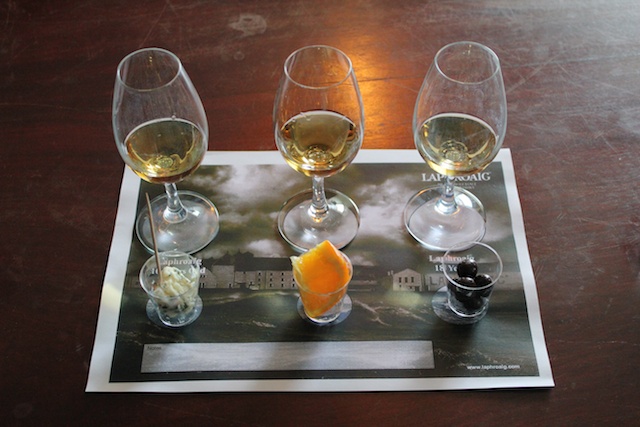
Our tour ended with a quick food and whisky pairing, which was simply fantastic. I would recommend everyone to try this once. The Laphroaig 10 with a bit of blue cheese, the quarter cask with a slice of orange, and the 18 year with chocolate-coated coffee beans. It's not really a food pairing, as much as a flavor enhancement. We were both quite impressed how well it worked (especially with the 18 - my God!).
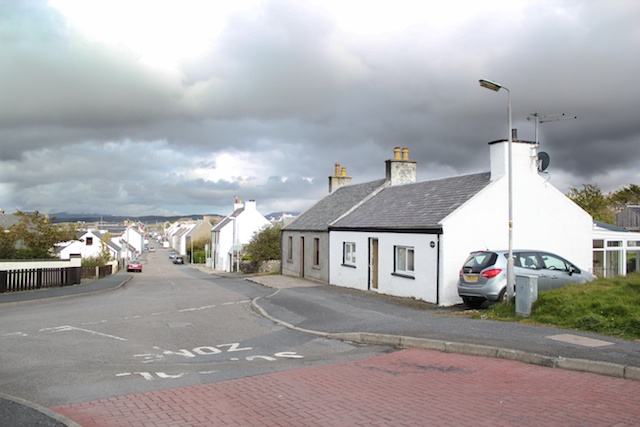
Our usual lodging at Bowmore was booked this weekend, so David ended up finding us this cozy little house just around the corner. Our baby Vauxhall fits nicely in the driveway and I about died when I saw the comfy back porch. There's no internet, so I've been sitting at Duffie's bar for the last hour drinking beer, using the free wifi, and typing this opus.
I'm beat. Time to eat.
-David Driscoll
